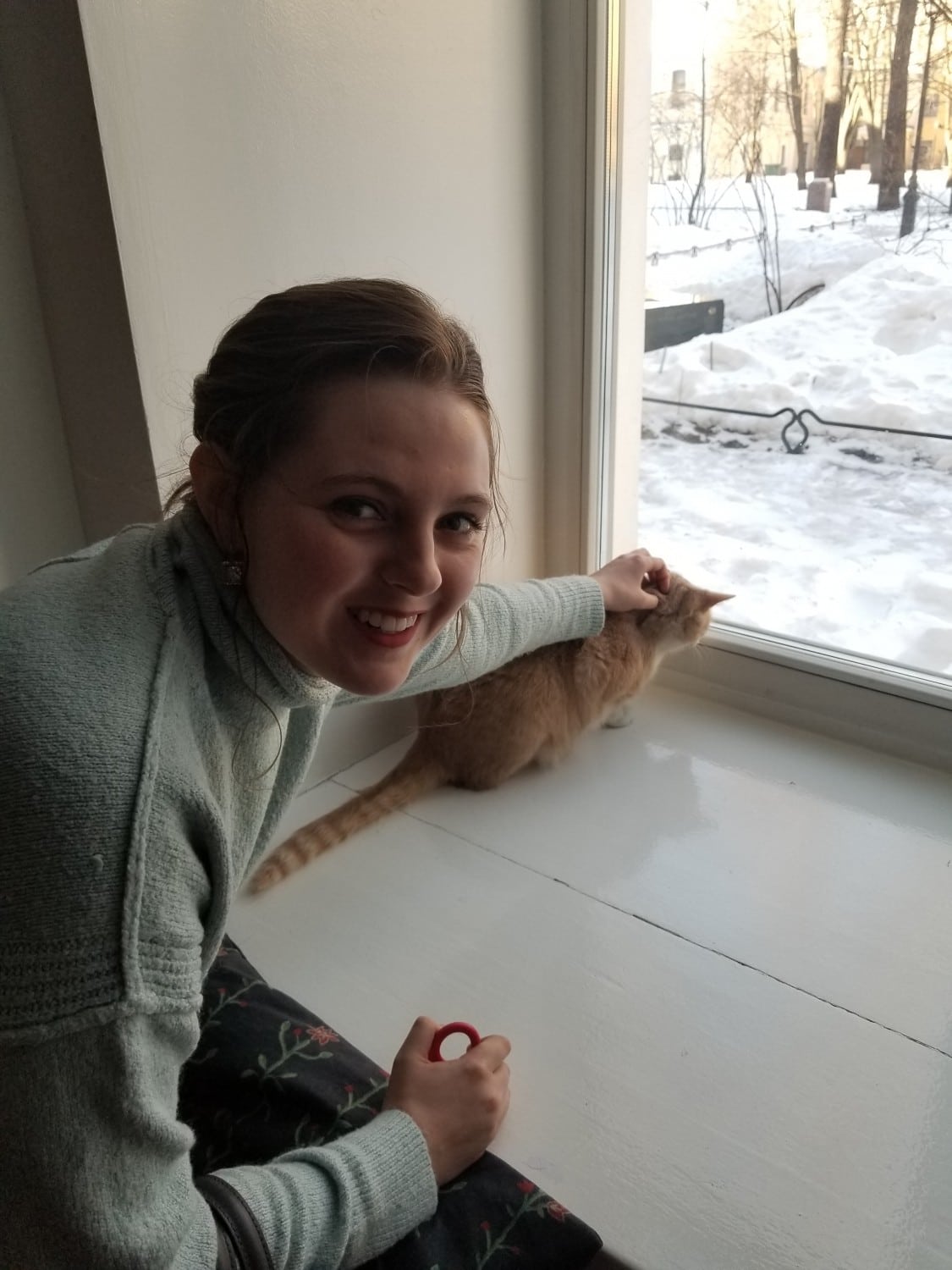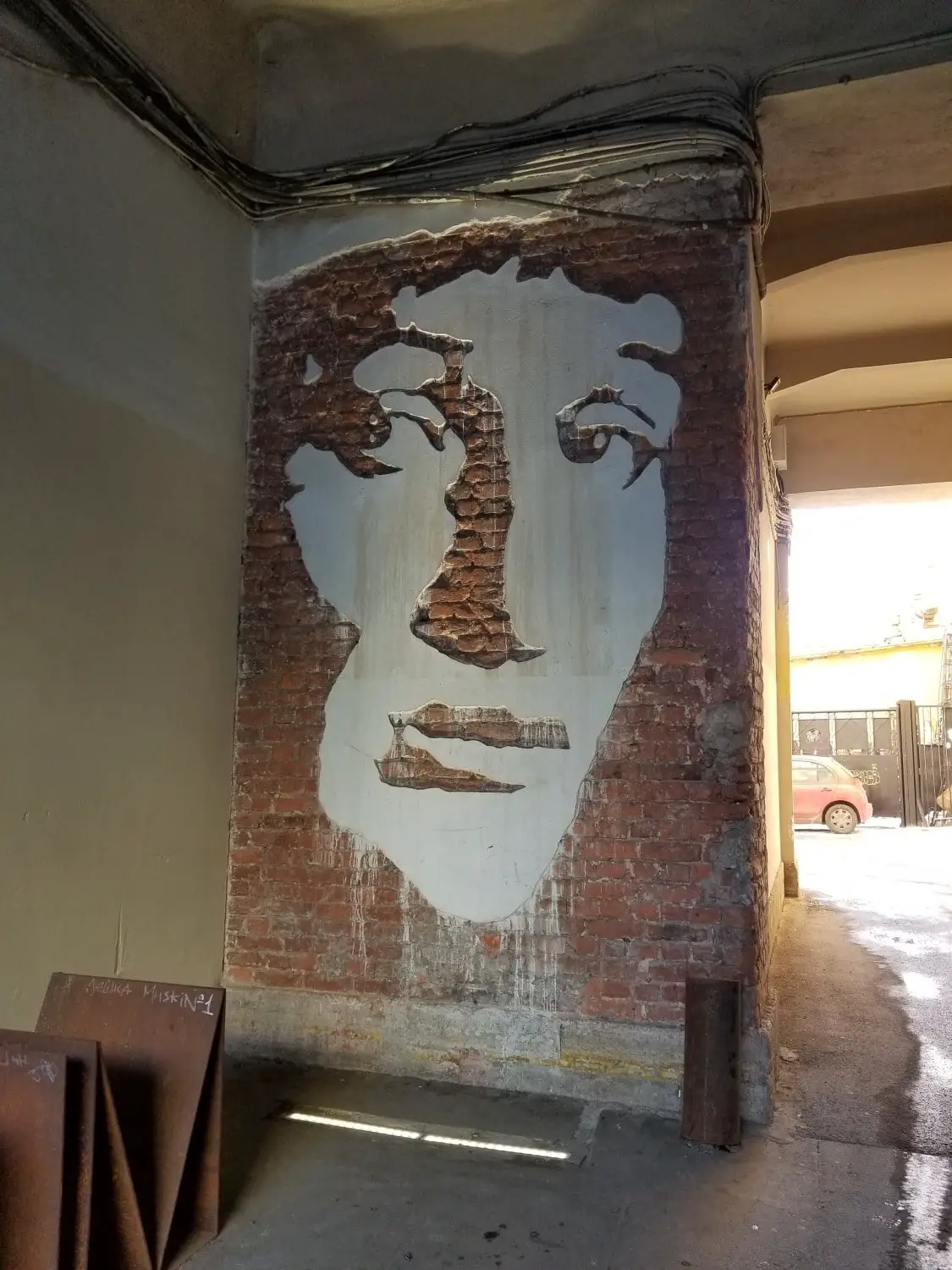The Anna Akhmatova Museum at the Fountain House is a charming museum that provides both a glimpse into the life of the famed poet and the culture of St. Petersburg that she lived in the 1930s and 40s. Akhmatova is one of the most well-known poets of the Silver Age of Russian literature whose poem “Requiem” is a lasting testament to the emotional hardships faced by a mother as her son is taken to the Stalin era labor camps. This poem was based on Akhmatova’s own experience as her son was arrested and sentenced to working in the labor camps.
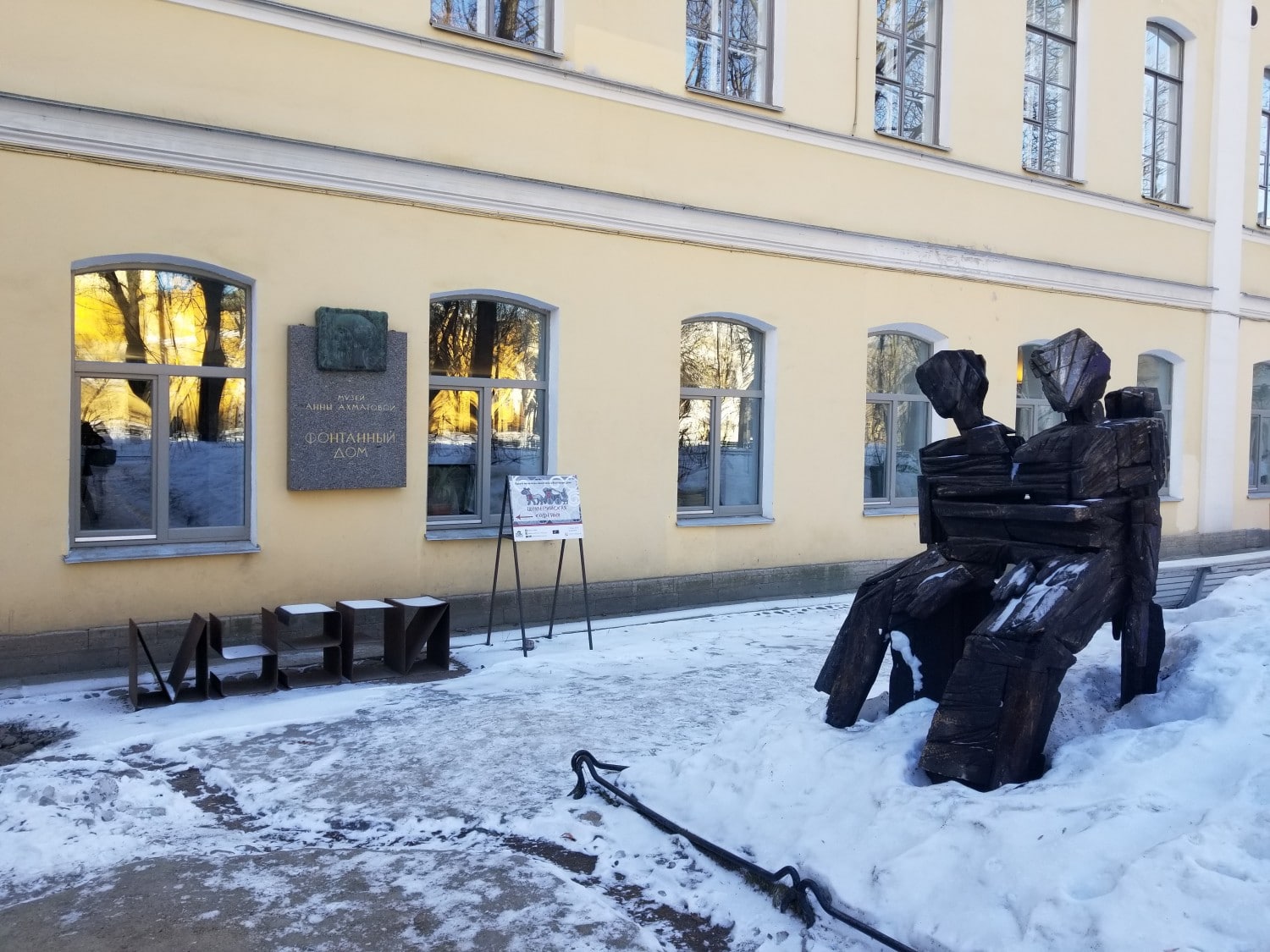
The museum complex consists of two buildings; the first is where tickets are purchased, and the second, the Fountain House, where Akhmatova lived from 1935 to 1942. To enter the museum courtyard, turn onto Liteyniy Avenue from Nesky Prospekt.
Once inside the courtyard, signs clearly indicate in English and Russian where to purchase tickets. Entrance to the museum is free for students with a valid Russian student ID (you’ll have one with your SRAS program); however, such students must still receive an official ticket from the cashier.
After entering the Fountain House, one will find the layout of the museum to be relatively simple. The first floor consists of the cloakroom, which is free to all museum guests, as well as a small café and washroom. One does not have to purchase a ticket to the museum to sit at the café, and I have to imagine this would be a lovely place to sit and write with the presence of Akhmatova surrounding you.
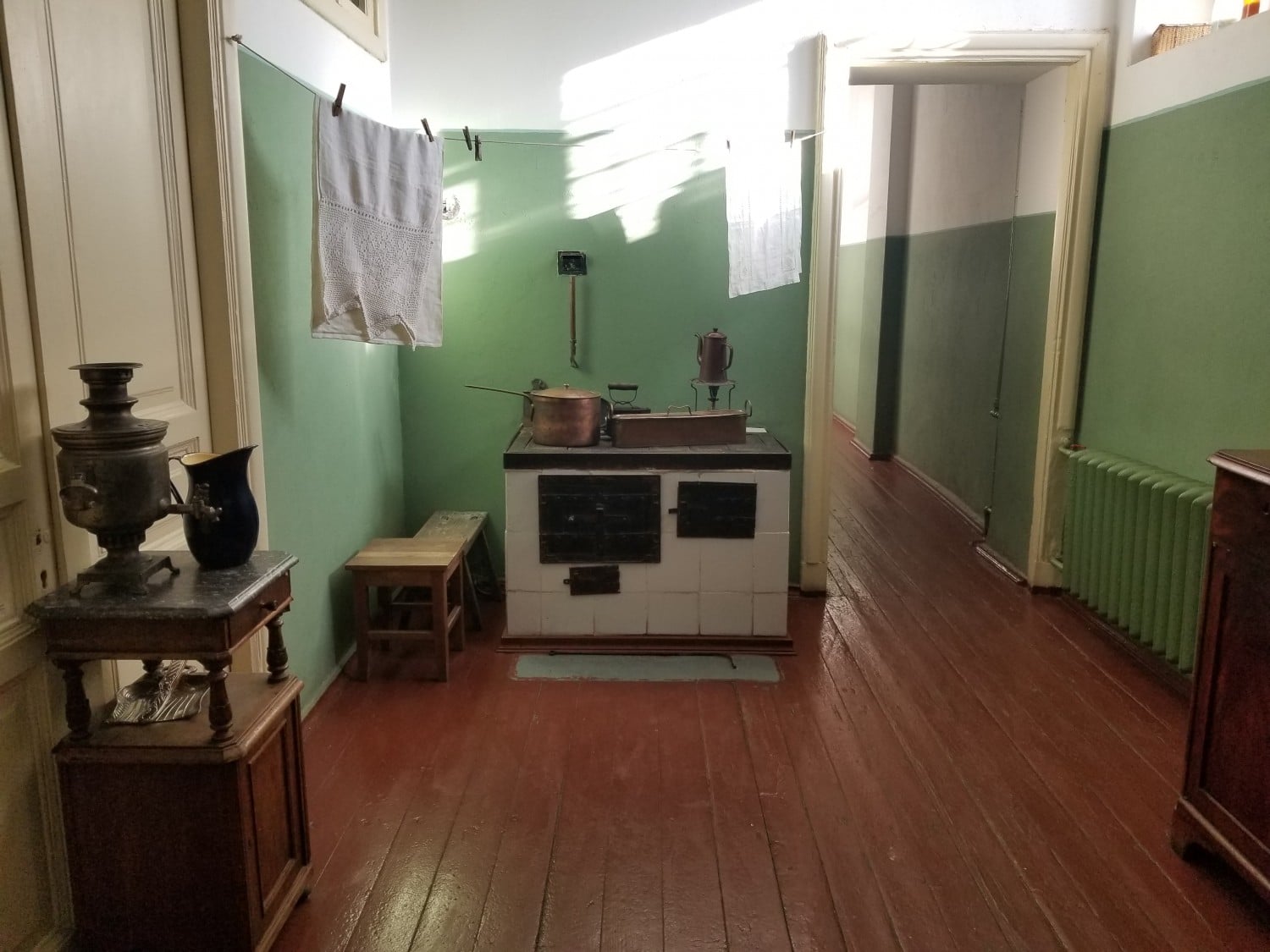
Past the café, there is a staircase that leads to Akhmatova’s third floor apartment that has been transformed into a cozy museum. The path through the museum begins in the communal kitchen, which is staged with pots and pans to appear almost frozen in time. After the kitchen, a hallway leads to the main exhibit on Akhmatova’s life and poetry. The exhibit is simple, yet elegant. Artifacts from her life are displayed in a semi-circle behind a glass display. Behind the artifacts, a white sheet printed with excerpts from Akhmatova’s works covers the walls. In front of the display, there are screens that provide information about each of the artifacts as well as excerpts from her poems that relate to the pieces. This is the area of the museum in which I spent the most time (in total approximately one out of my two hours there).
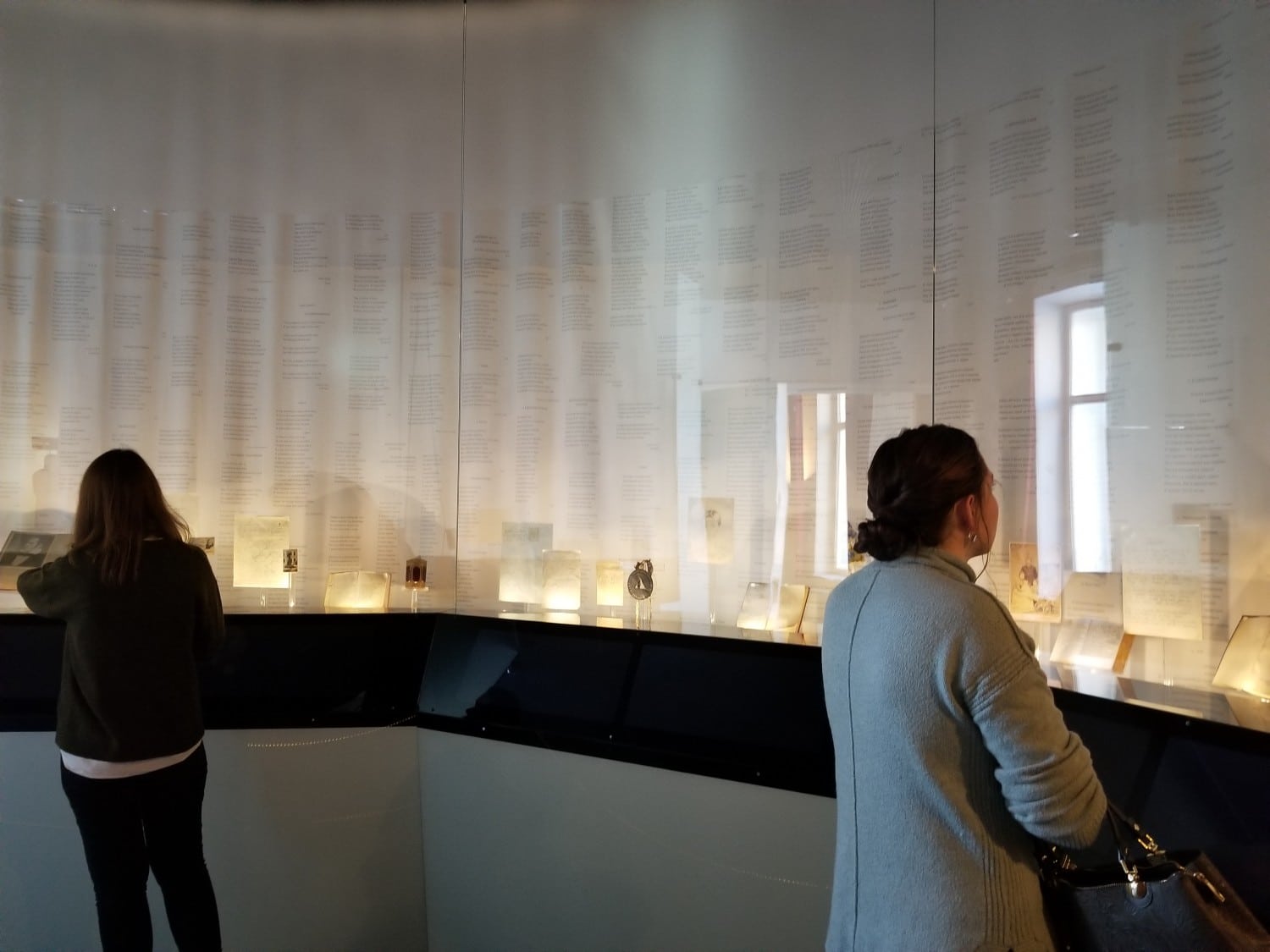
After the main exhibit is the room of Nikolay Punin, followed by the shared dinning room, and finally Anna Akhmatova’s former room. Perhaps one of the most interesting parts of visiting the Anna Akhmatova Museum, aside from all of the information on Akhmatova’s life, is getting a glimpse into life in a communal apartment.
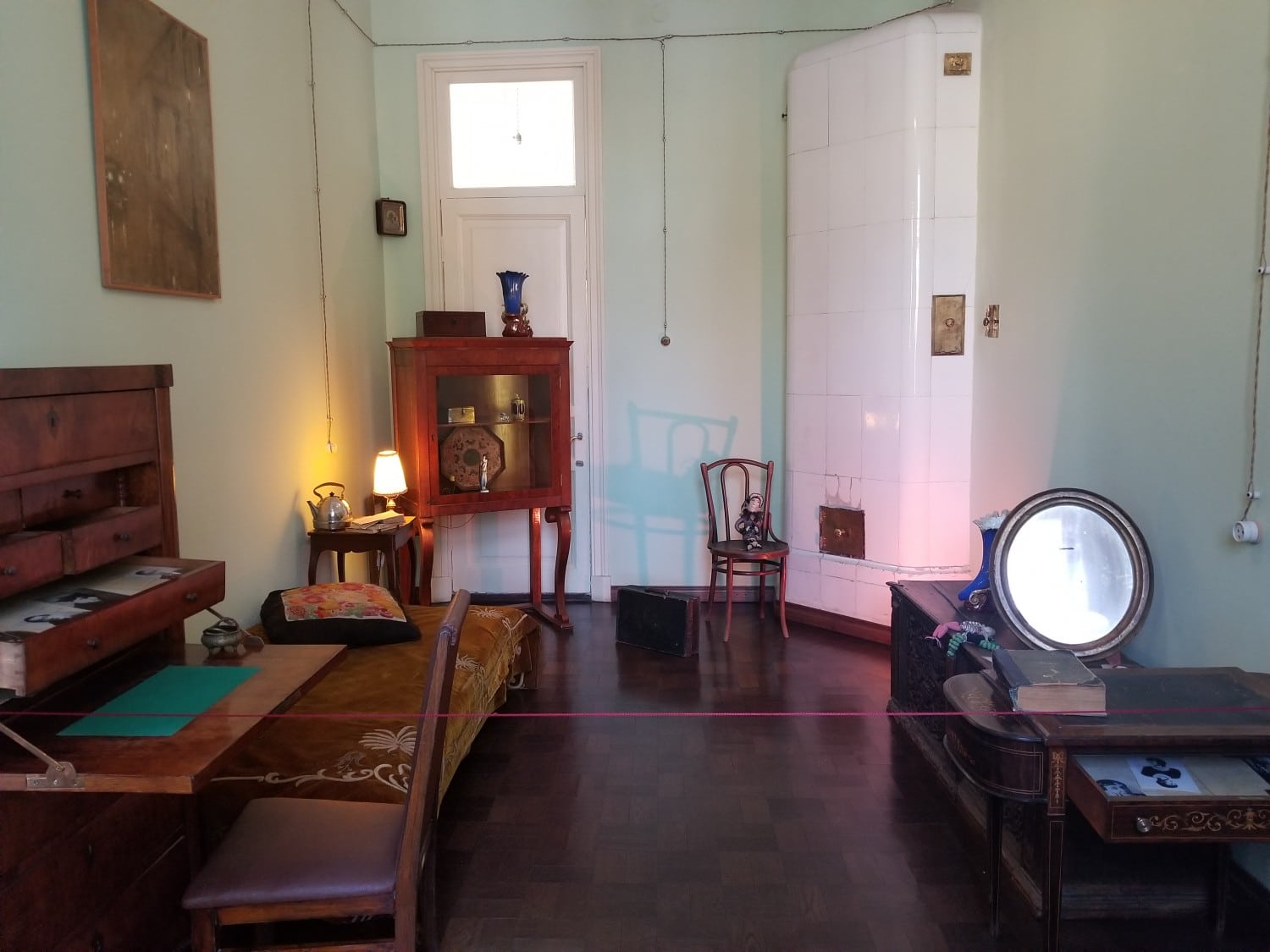
Since my arrival in Russia I have noticed the difference in personal space between American and Russian cultures, and this difference I felt was reflected in the nature of the communal apartment. During my visit to the museum there were only six people visiting the apartment. I found the apartment at times to be too small for the six visitors, yet there are pictures in the museum of ten or more people crowded around the dining room table.

Personally, I am a fan of Akhmatova’s works; however, I would recommend everyone visit the museum when in St. Petersburg. The museum is very informative, and the staff welcoming and friendly. All in all, the Anna Akhmatova museum is an enjoyable and informative way to spend anywhere from half an hour to two hours. Plus there are three friendly cats there!
